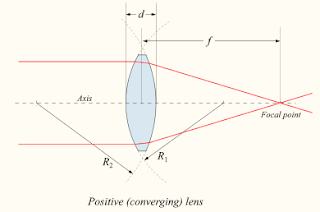
A fish-eye lens is a converging lens. This means that the light will focus on a focal point (i.e. one point instead of diverting light in multiple ways like a diverging lens). Most converging lens diagrams look something like this:

This diagram is from Wikipedia (http://en.wikipedia.org/wiki/Lens_(optics)). In this diagram, the rays converge on a single focal point. This is similar to how a peephole lens works. The rays of light (on the left side) enter the lens and converge on a single point. In the peephole lens, the focal point is the area where one would place one's eye.
Attempting to attain the proper effect of a fish-eye image with a door peephole and a point-and-shoot camera is much harder than it seems. Since the peephole is made for seeing objects in a broad but near area, the camera user must zoom in. The barrel of the lens also makes the image appear farther away due to the length of the peephole lens from the camera lens.
The shape of the lens distorts the image due to its extreme curvature and the layers of lenses. In the top photo, the edges of the image are much more circular than in real life. Photographers sometimes use the fish eye lens when shooting landscape photos because it suggests the circular-ness of the earth. However, their photos turn out a lot nicer and usually lack the black area around the circle.
I don't really understand much about the other physics-properties used in these types of lenses, but I look forward to learning about it later on in the year.

No comments:
Post a Comment